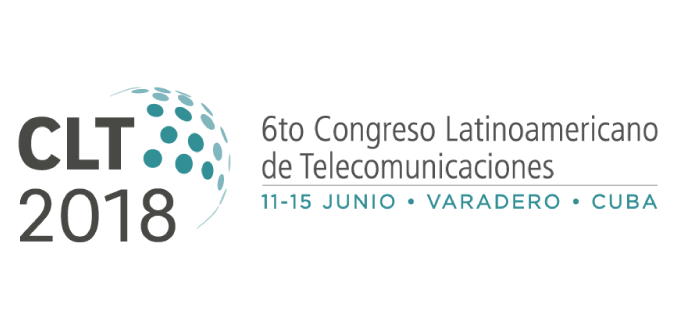A New Internet Ecosystem to Connect the Unconnected
28/06/2018

The multiple stakeholders involved in Internet development must come up with a new ecosystem to connect those who are still unable to access the Internet by means of innovative ideas and by promoting a connectivity model that is different to the one used in Latin America and the Caribbean over the past 25 years.
The digital divide will not be bridged by repeating what has been done over the past twenty years, and it is necessary to develop innovative strategies with the active participation of the communities interested in connecting to the Internet, said Oscar Robles, Executive Director of LACNIC, during the Latin American Telecommunications Congress (CLT) held in Cuba.
This new ecosystem design requires multistakeholder collaboration and different management models, where business organizations give up part of the spectrum they have obtained, and States create agile mechanisms to allow those communities interested in receiving network connectivity to use them.
Robles moderated one of the panels at CLT (Internet Access and Innovation – A Strategy for Growth and Economic Development), which analyzed the changes to the digital divide, which is becoming increasingly complicated each year as the population for which Internet access is the most difficult remains unconnected.
The exchange of opinions was very valuable, and participants discussed the challenges faced when attempting to close this digital divide through innovative proposals and by designing and proposing alternative models to those applied so far.
Robles observed that the first solution must come from the communities themselves – many of which are geographically dispersed, in remote or difficult-to-reach areas, and even under vulnerable conditions – because they know their needs better than anyone else and can have a clearer idea of how to meet those requirements (click here to watch the interview).
The second contribution should come from the State, who should work with these communities and generate, for example, different regulations on the use of frequencies for Internet connections or granting benefits or exemptions to those who help connect the most remote and vulnerable communities.
“This 50% of the population with no Internet connectivity forces us to come up with creative ideas. It requires innovative solutions by the communities, by the State and by the technical community, for example, the creation of protocols that can be implemented and used openly and are less expensive over time,” said LACNIC CEO Oscar Robles.
If the State and operators are unwilling to invest in connecting these communities due to their lack of profitability, a solution might be for the State to approve flexible regulations allowing a secondary use of the spectrum granted to these operators.
“In this sense, the operators must also give up part of their right to exploit these frequencies to the communities that wish to do so, through simpler mechanisms,” Robles said.
Oscar Robles offered several examples of community efforts, including successful community networks in Mexico, Argentina and Brazil, which have organized and obtained resources to finance their initial connectivity. “These efforts result in low-cost yet sustainable connectivity, as the community is very involved,” he added.
LACNIC permanently contributes ideas and solutions at spaces aimed at government decision-makers, such as the CLT, to convey its message of an open, stable, secure and inclusive Internet.
(Free access, no subscription required)